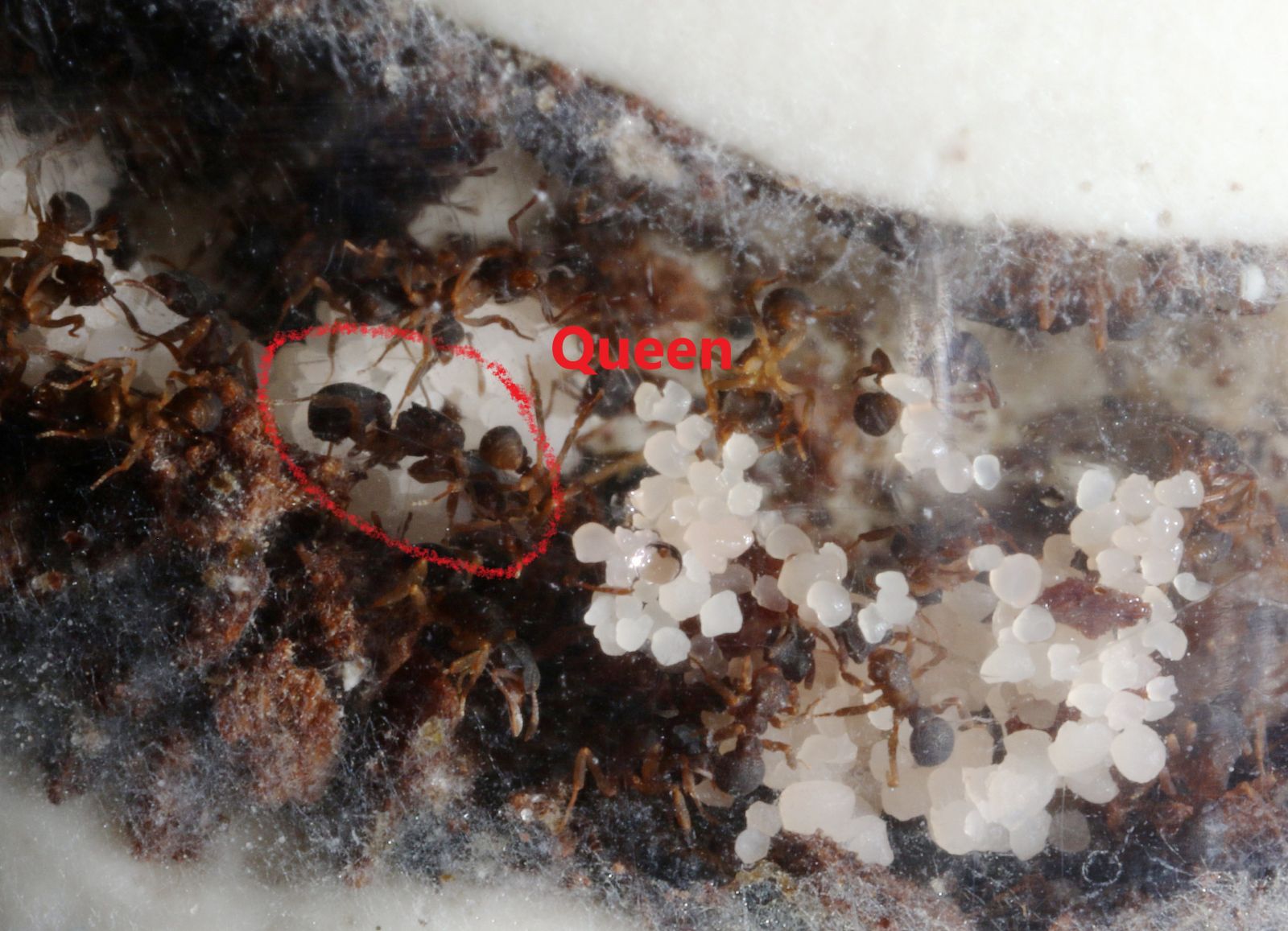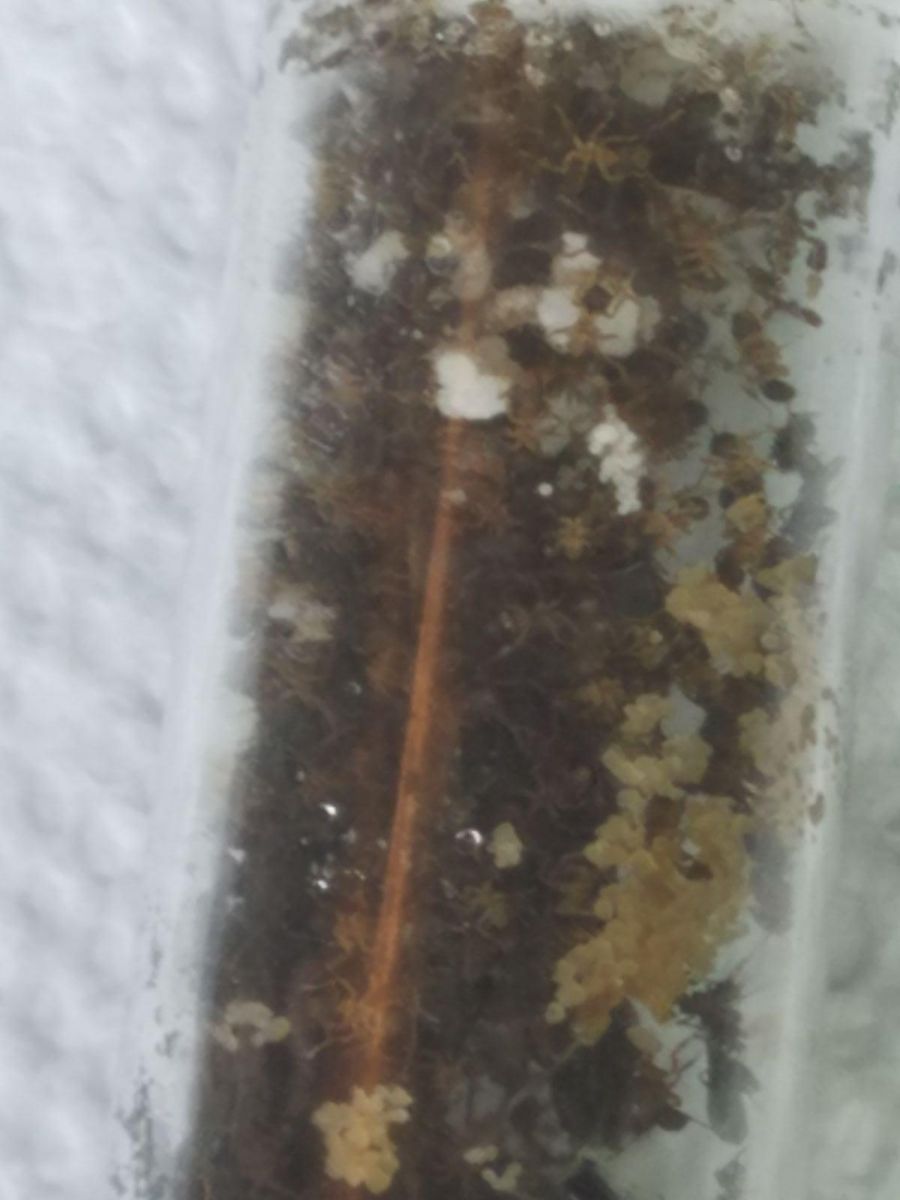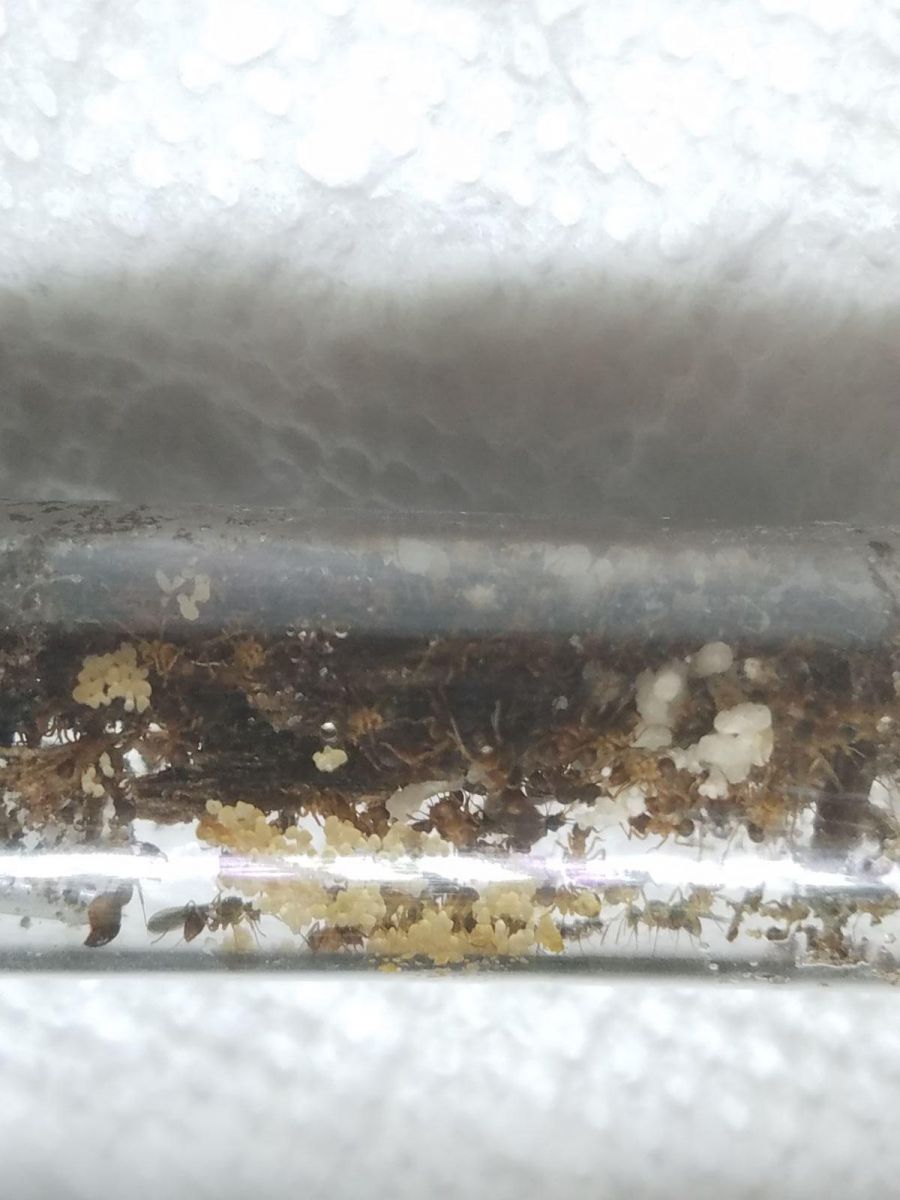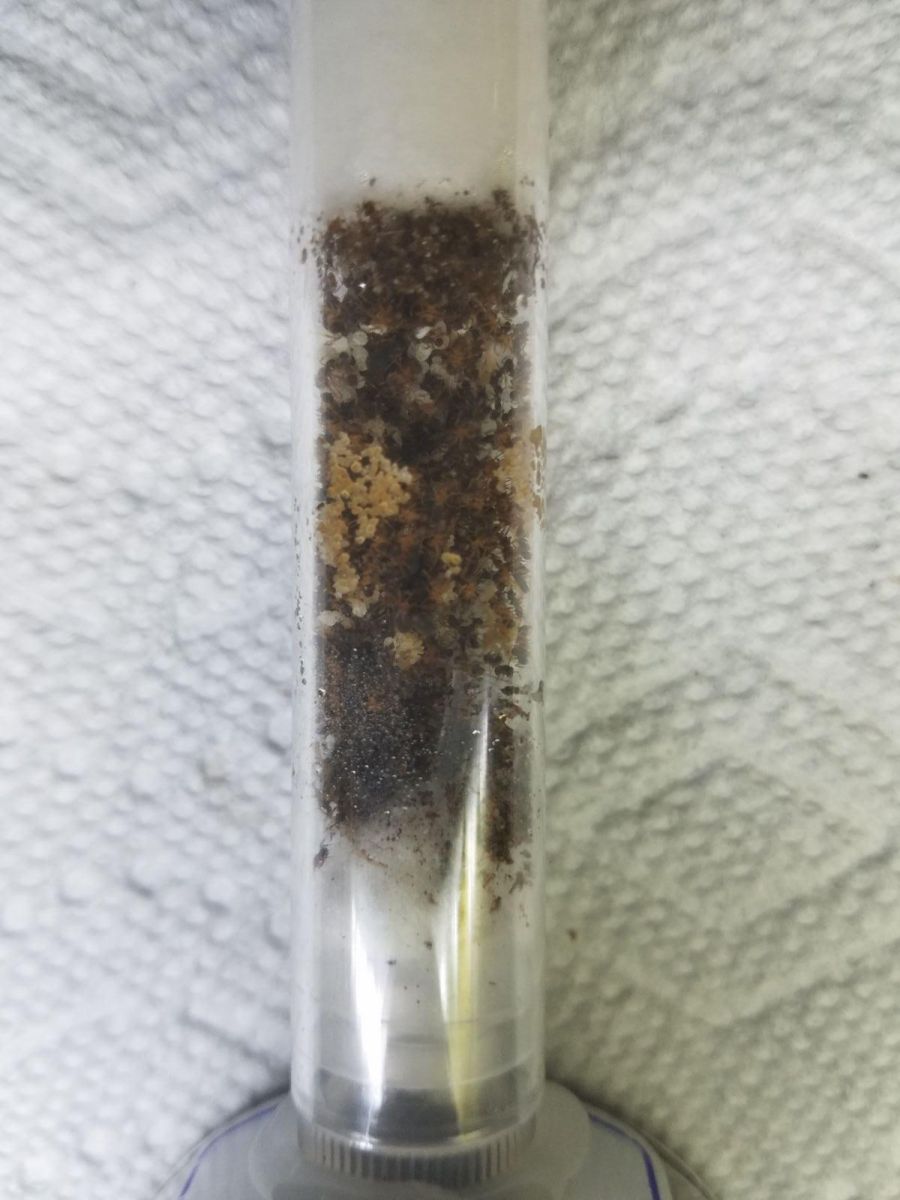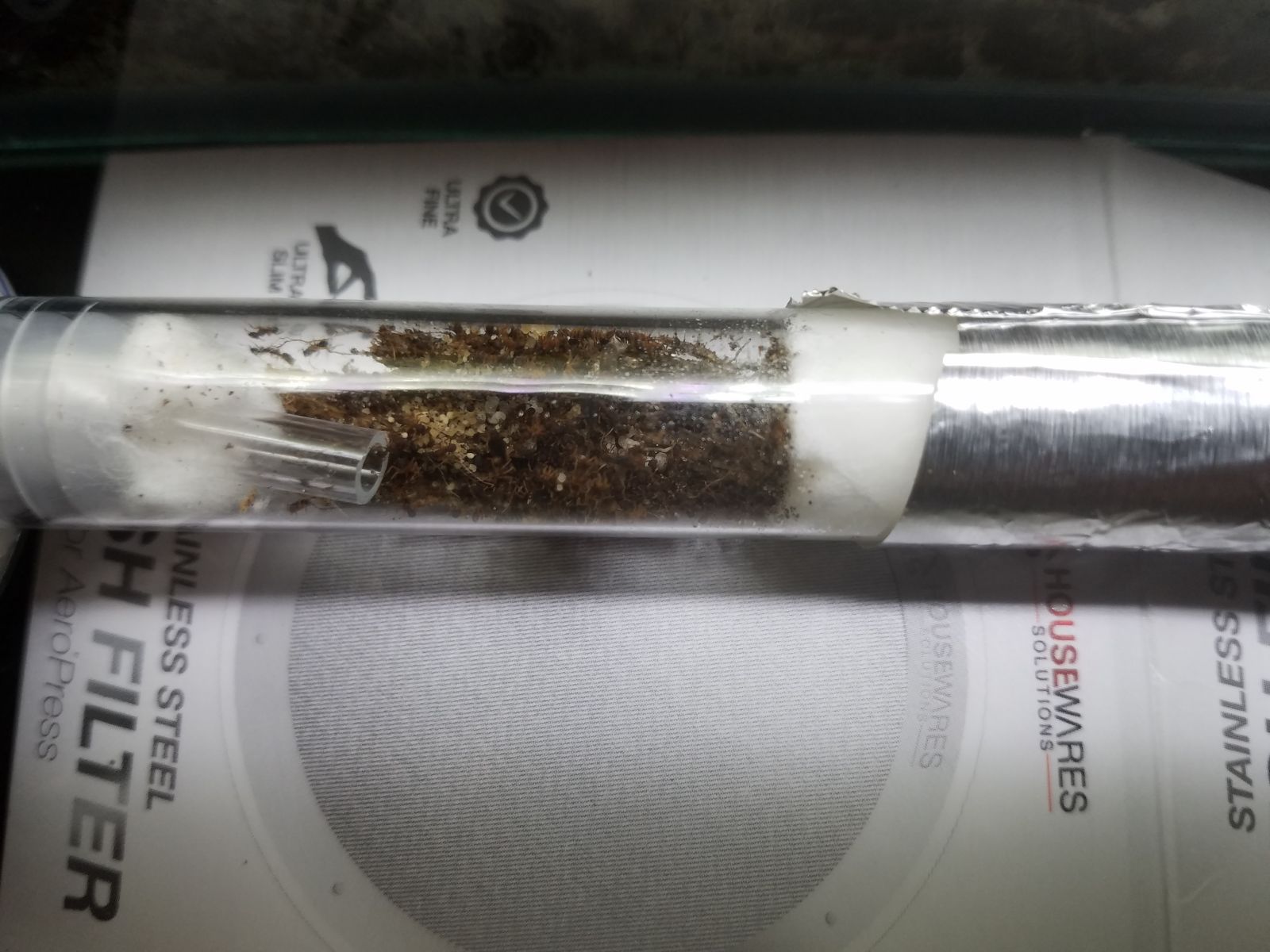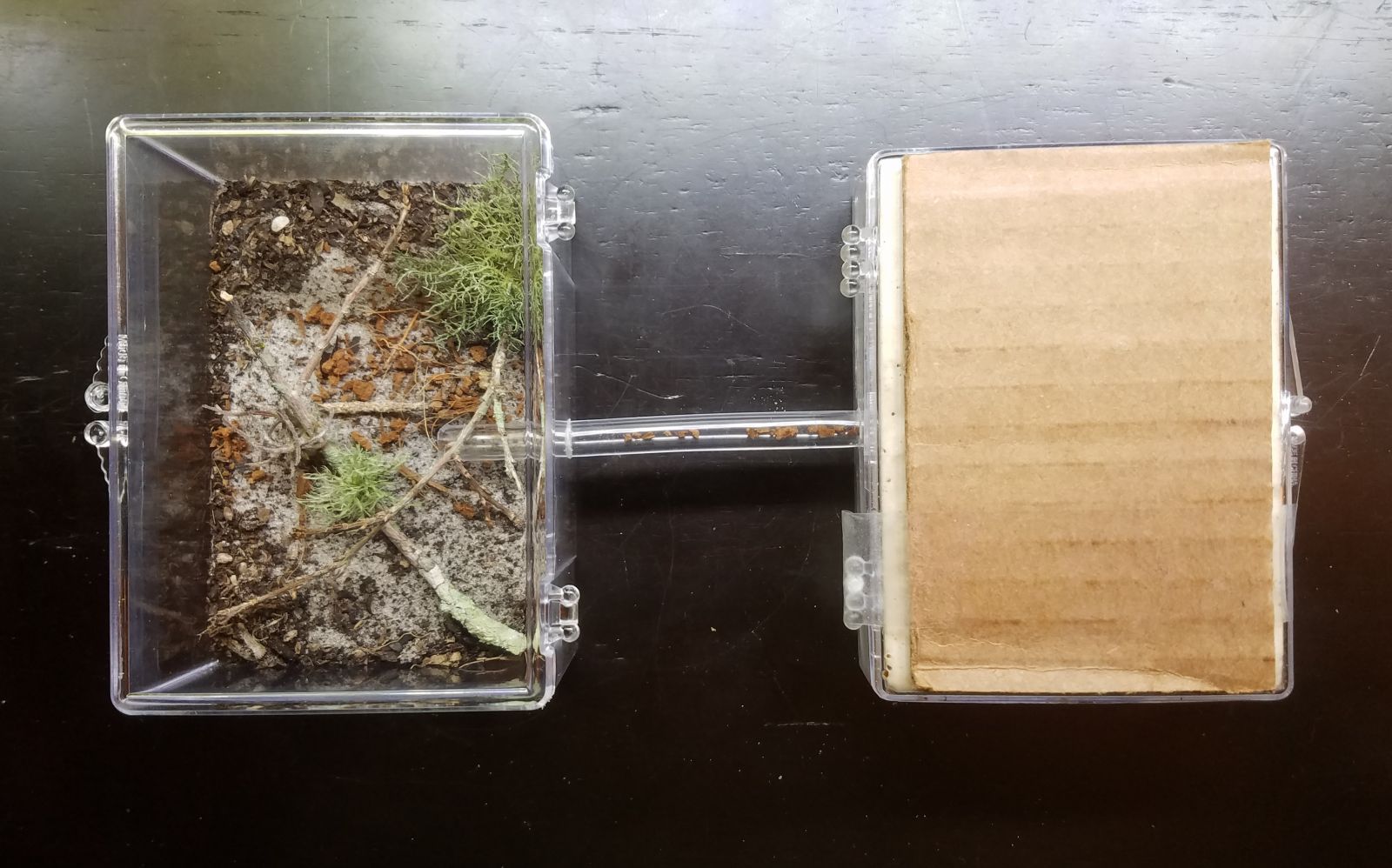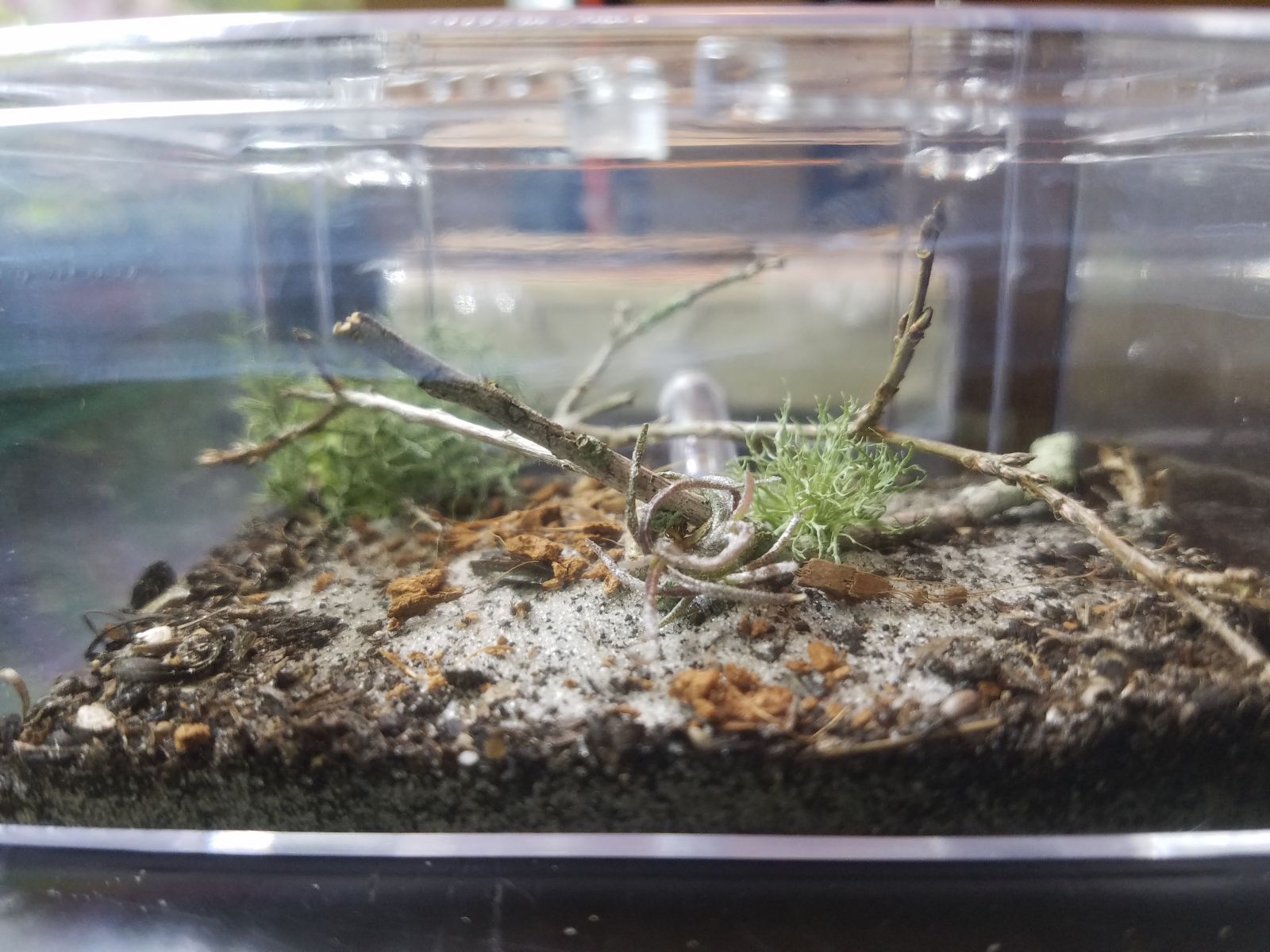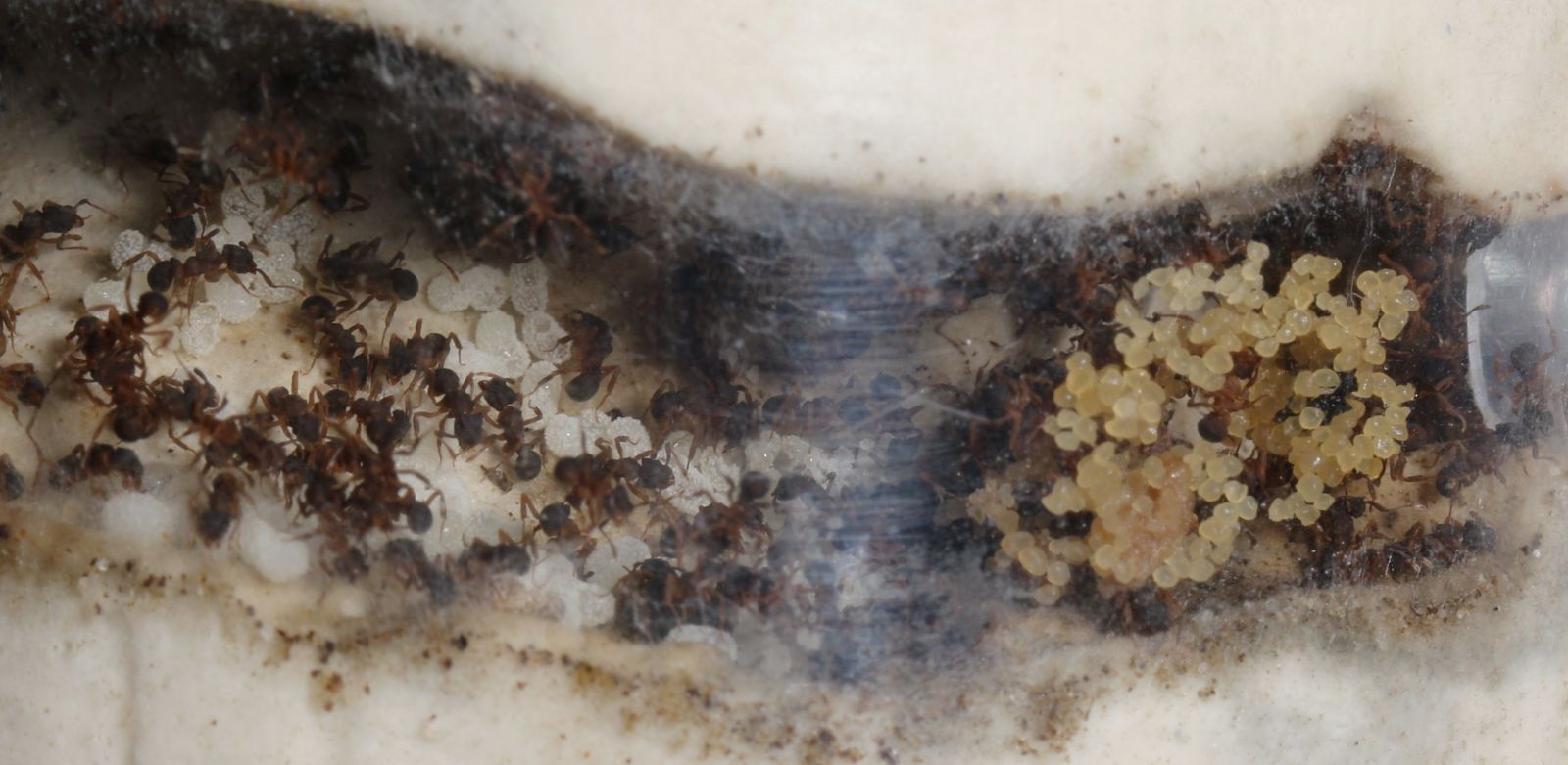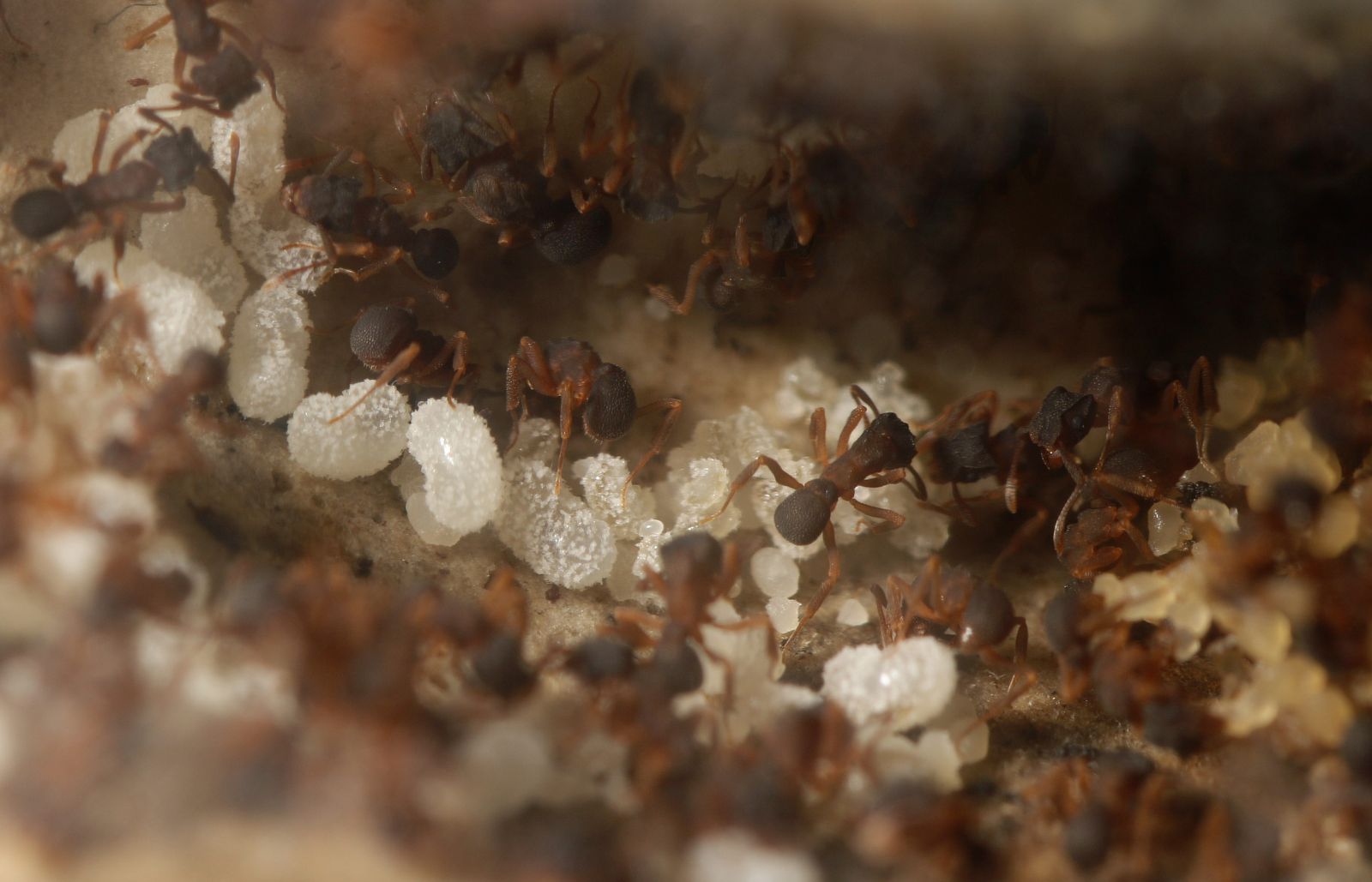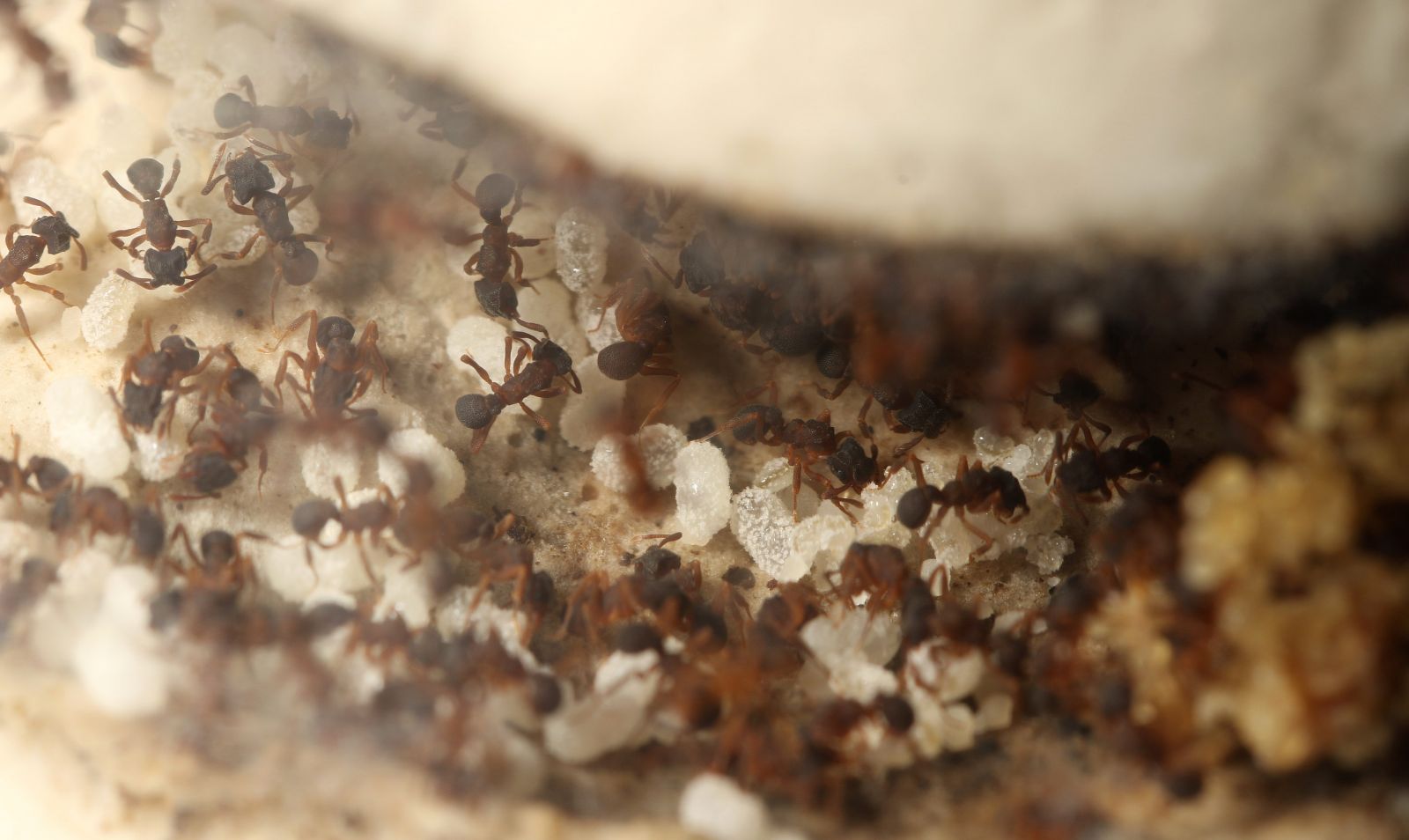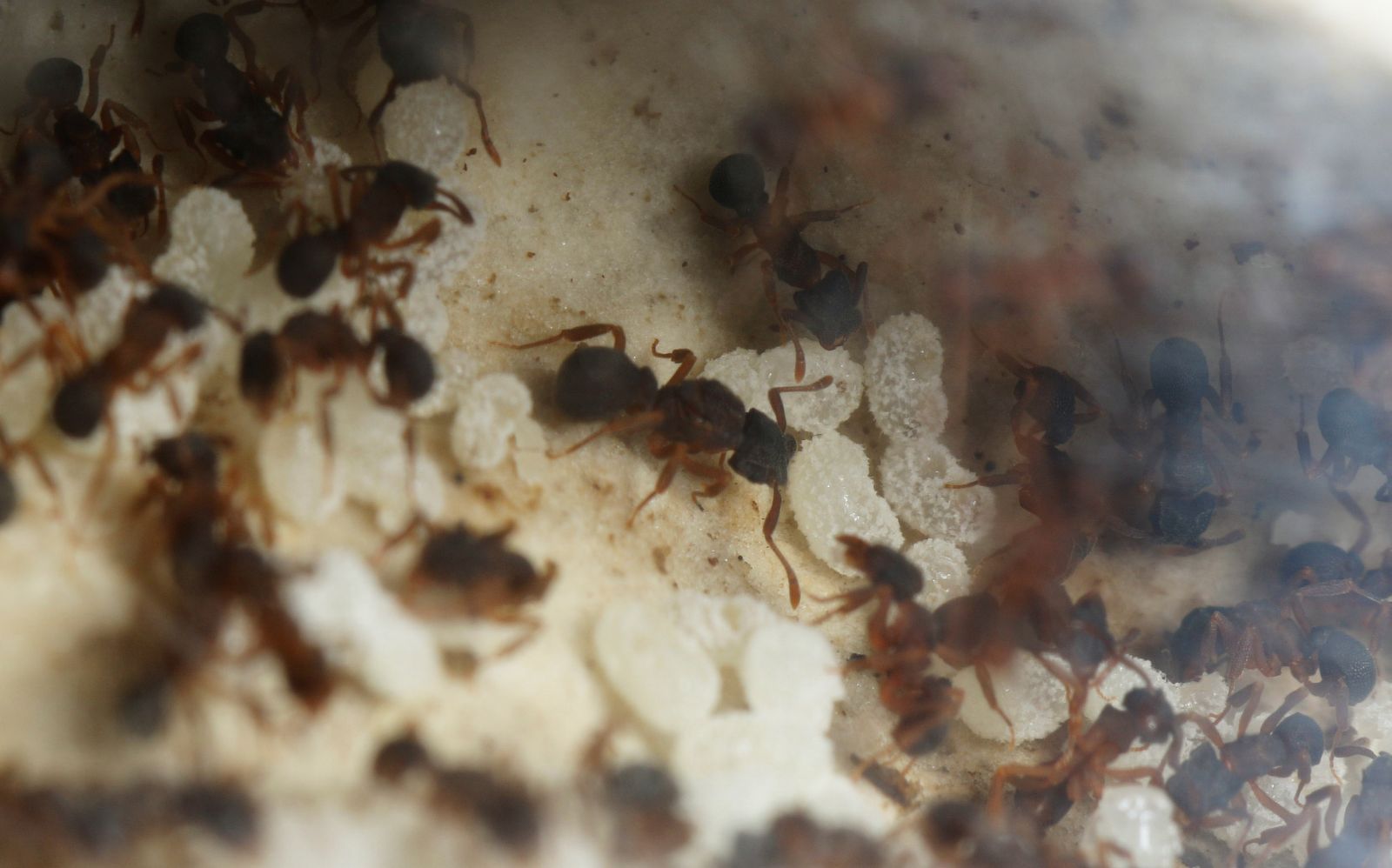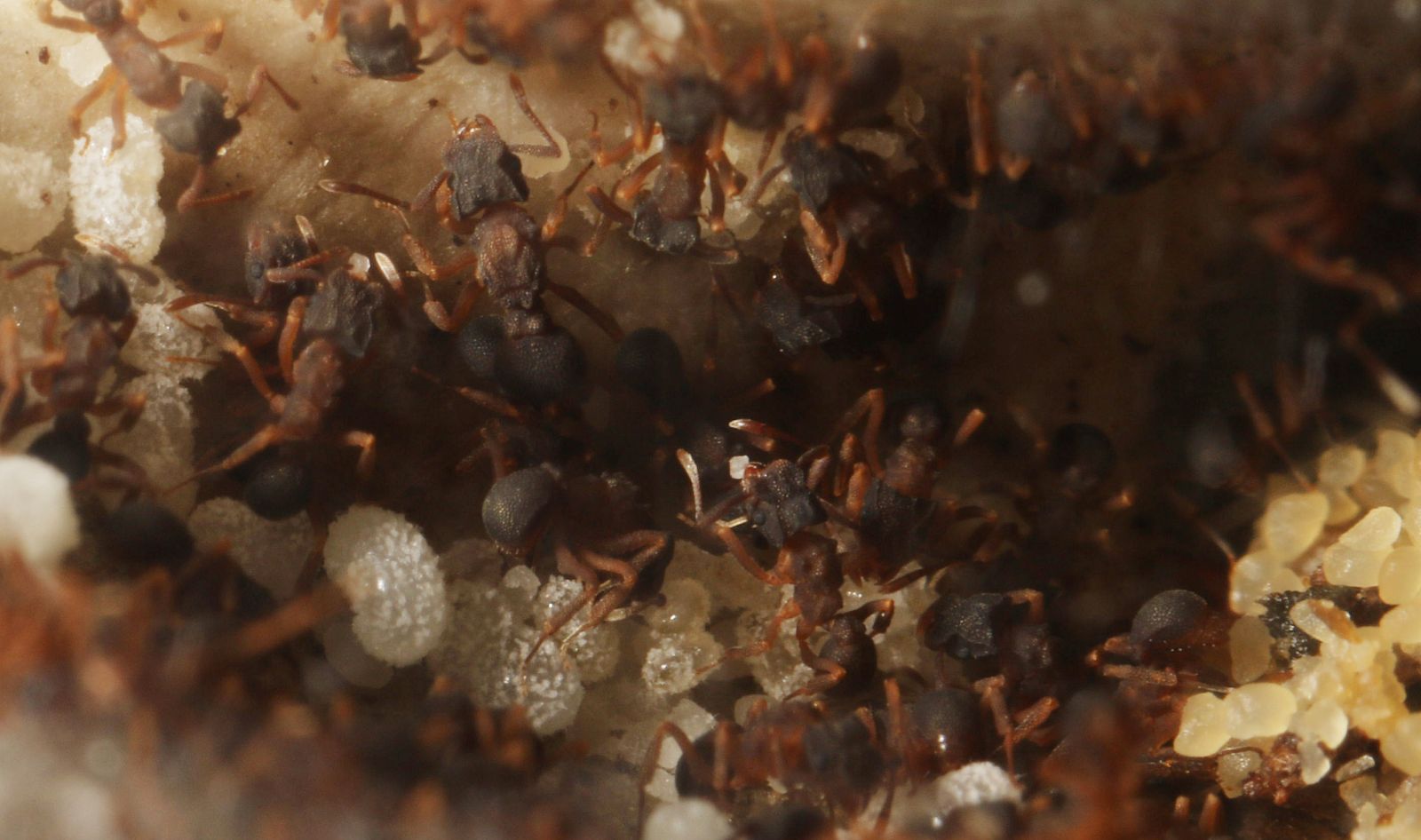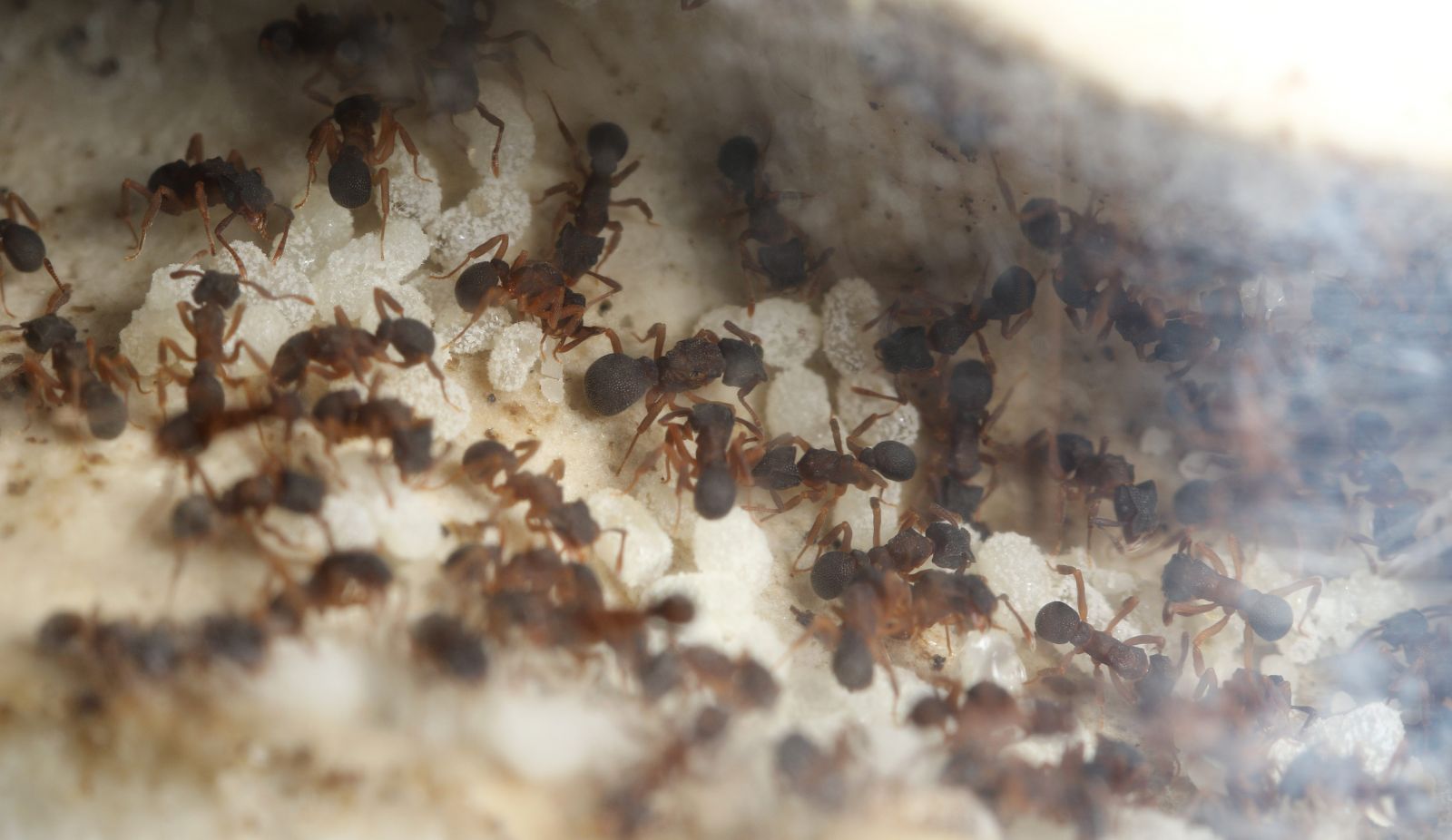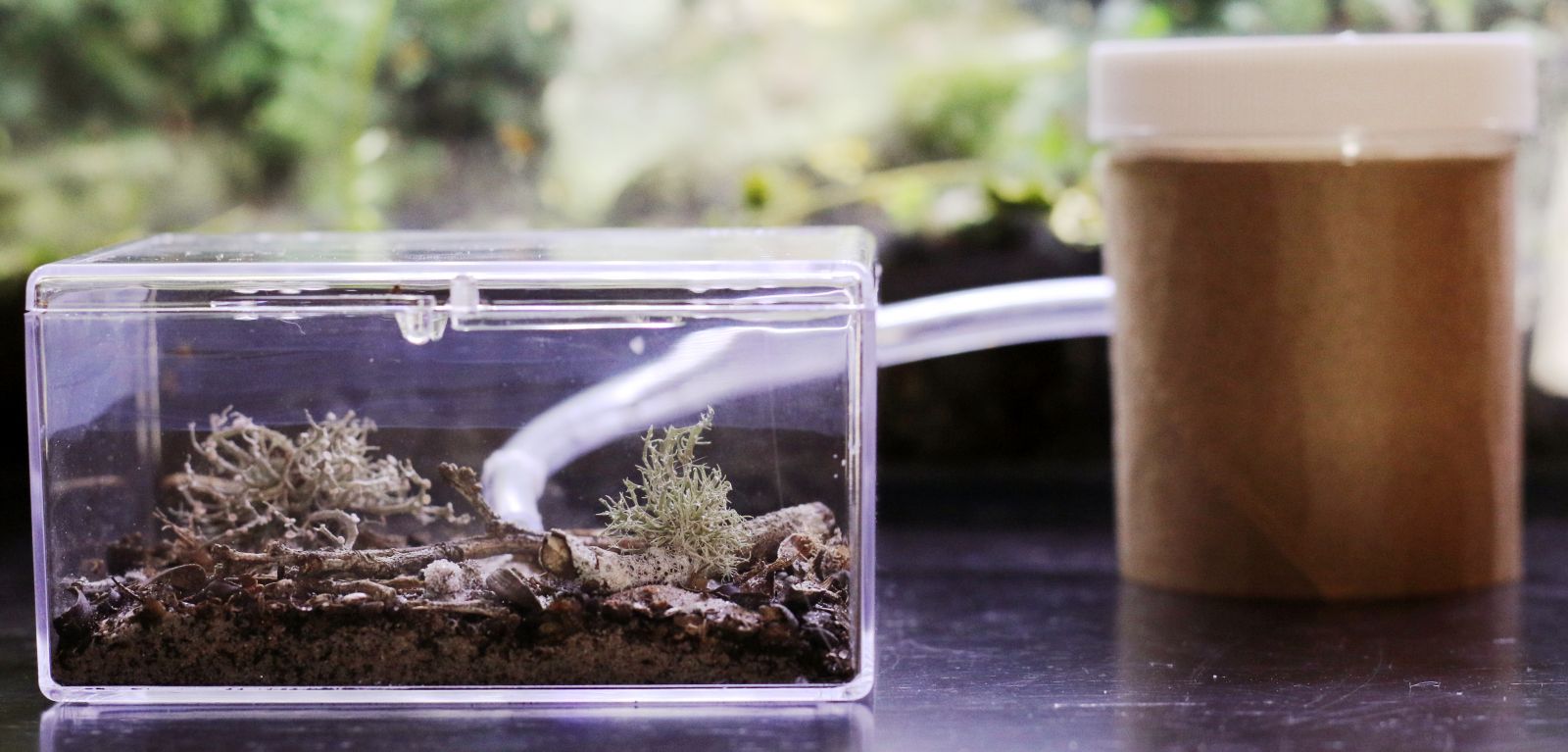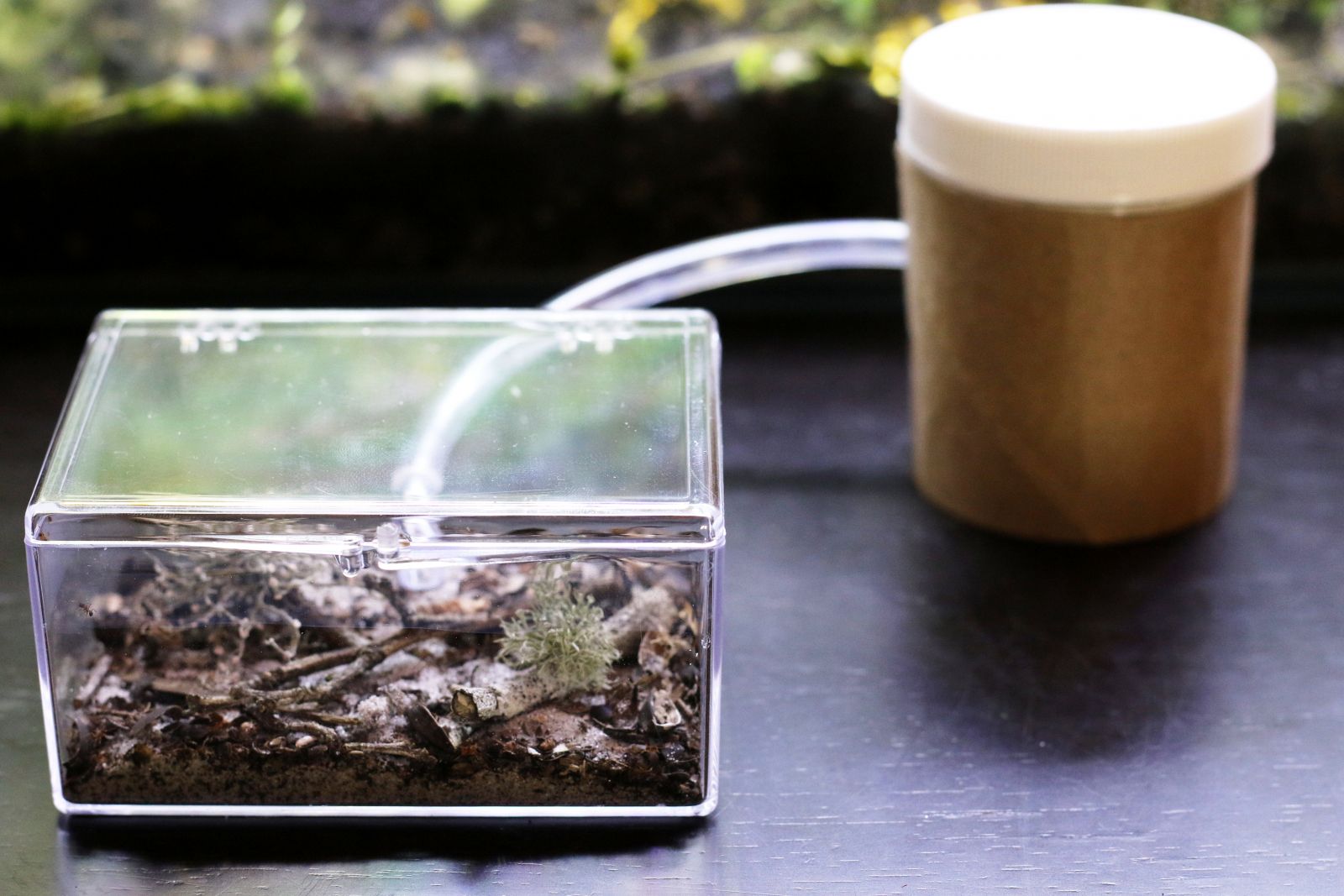Hello all. I just wanted to share a couple colonies of Cyphomyrmex minutus I've been keeping since early this summer. I was replacing some wooden boards around my garden that had begun to rot and while pulling them up came across two of these colonies. They were laid out perfectly between boards and to be honest I wasn't 100% sure what they were, but I ran inside and grabbed something to gather them in. I put them in large plastic containers with some foil wrapped test tube set ups sitting inside hoping that they would congregate in the dark test tubes and sure enough they did. I looked them up and when I realized what they were was immediately skeptical of whether or not I would be able to keep them successfully as I had never kept a fungus growing species. When I took a closer look at the ants in the test tubes I saw the yellow piles of yeast granules separate from the brood pile so I knew I had collected their fungus farm and had hope that I would be able to keep them. I searched this forum for everything I could find and thankfully had some plaster sitting around so the following pictures are what I was able to cobble together that afternoon to put them in and I am glad to say they have been doing pretty good for the past several months.
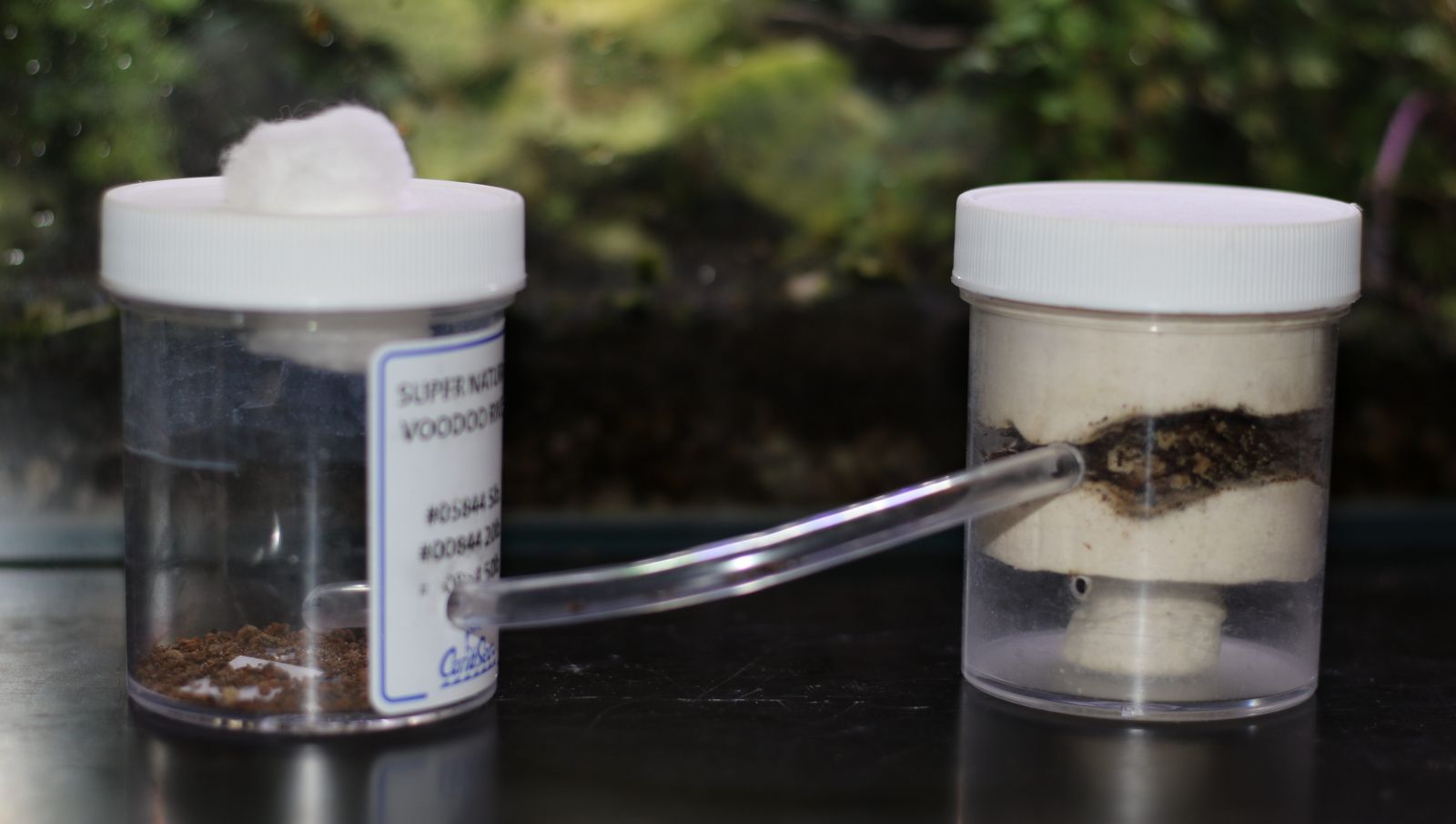
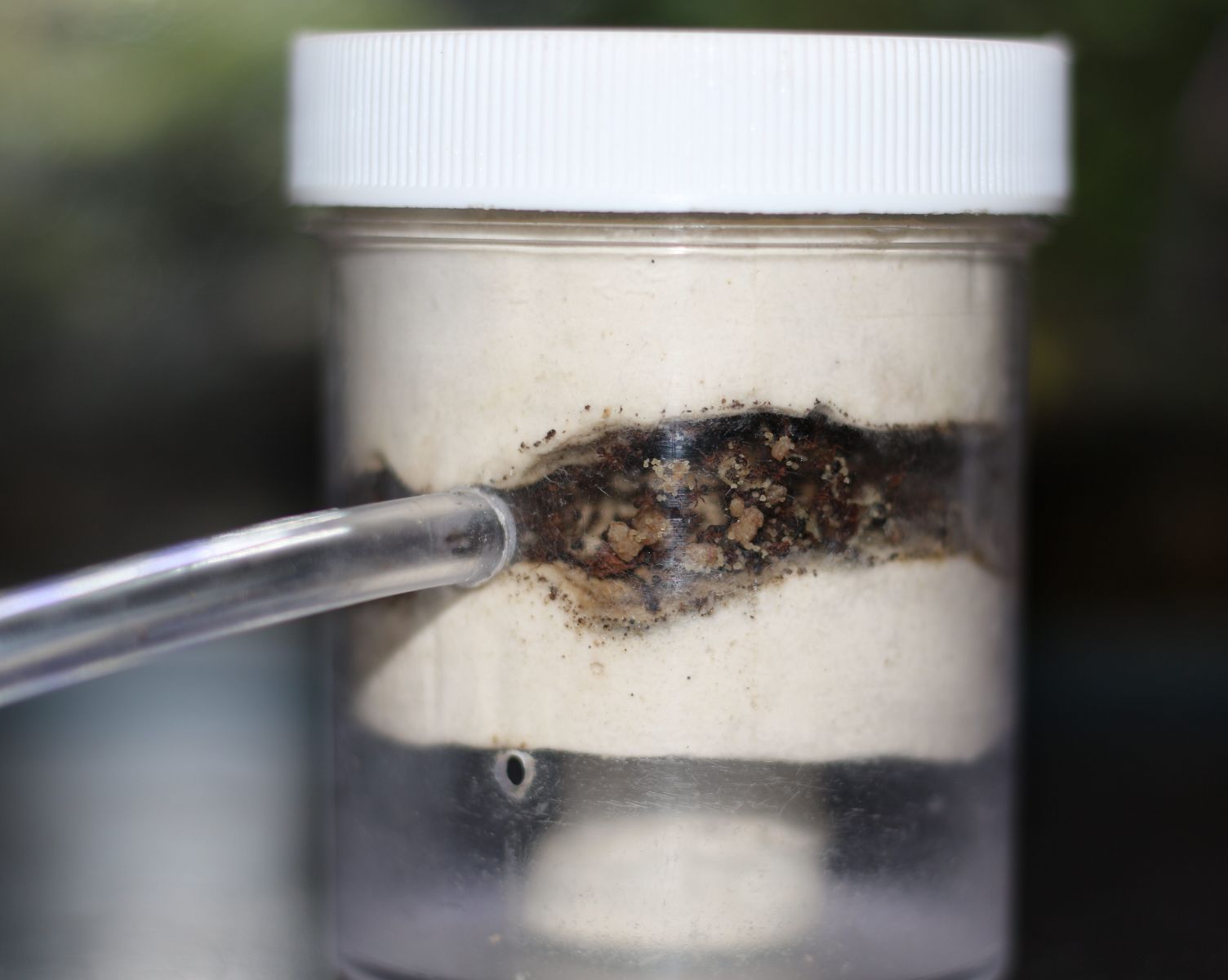
I have a cardboard sleeve that keeps them dark most of the time but I removed it for the photos. I plan on making them a nicer out world, but this is what they have been in since I collected them and I've kept it this way for simplicity sake until I was sure they were doing well. I've been giving them hornworm droppings which they take readily and feeding them honey. You can see some of their garden on the right of the entrance in the second picture.
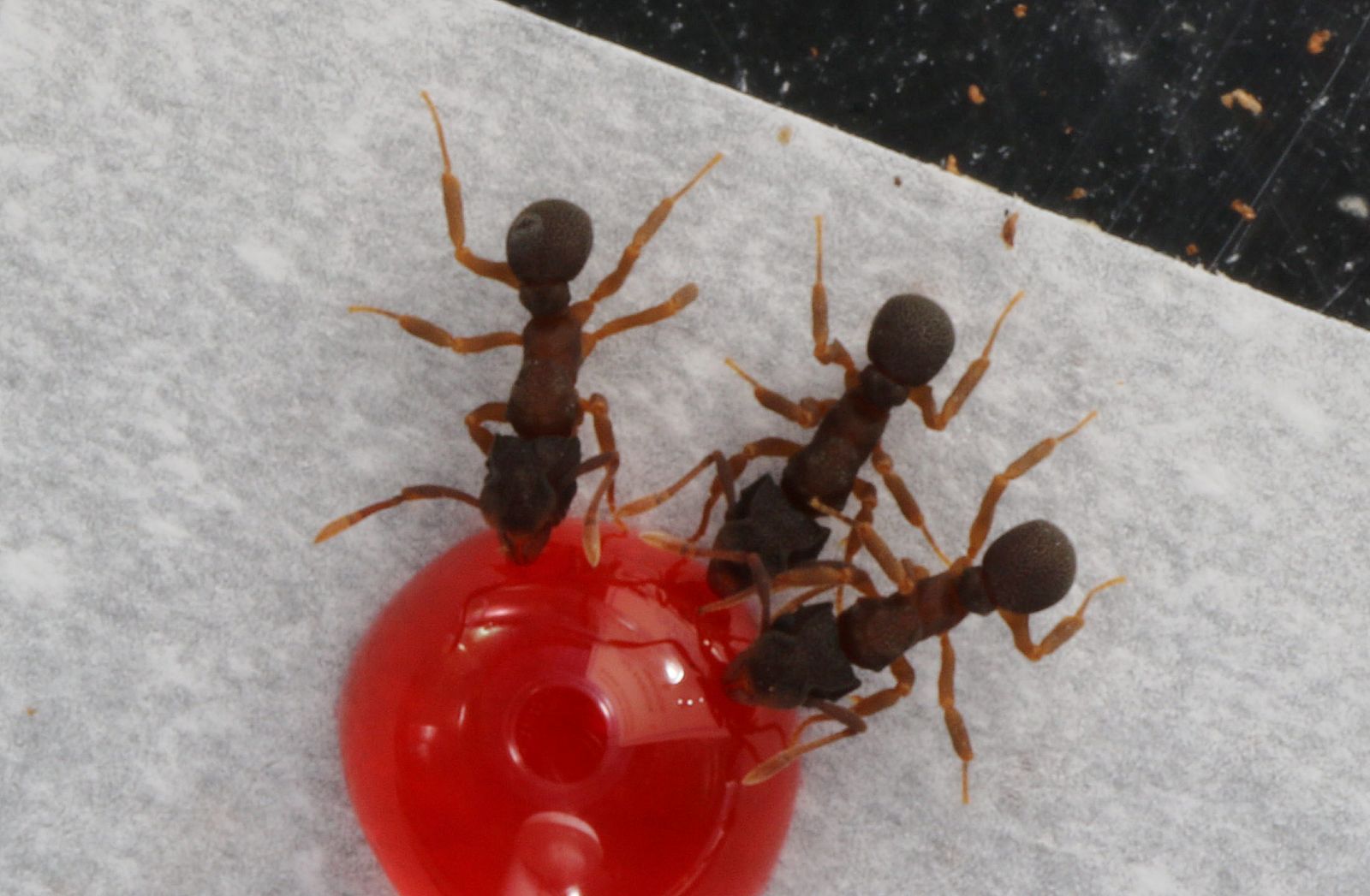
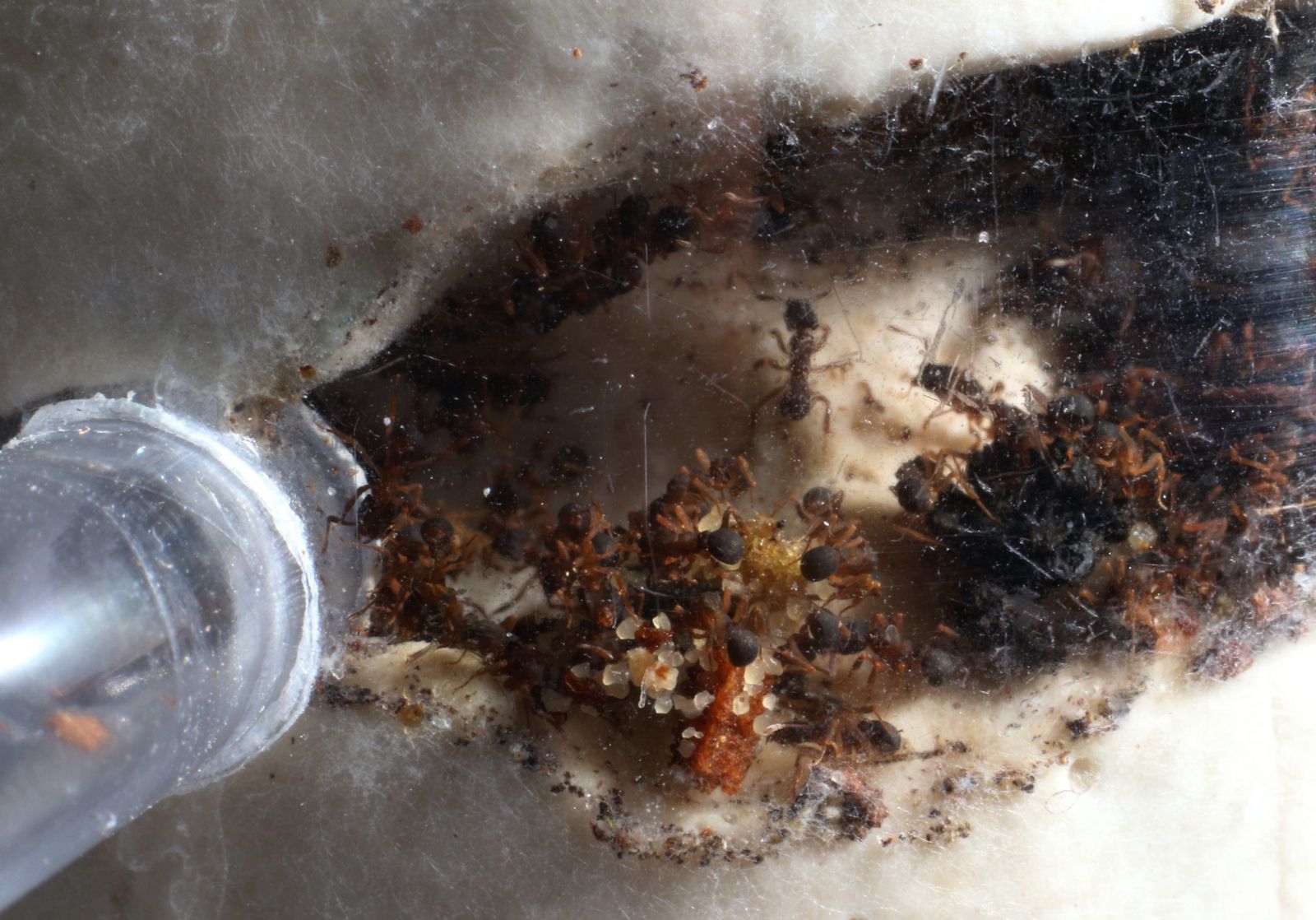
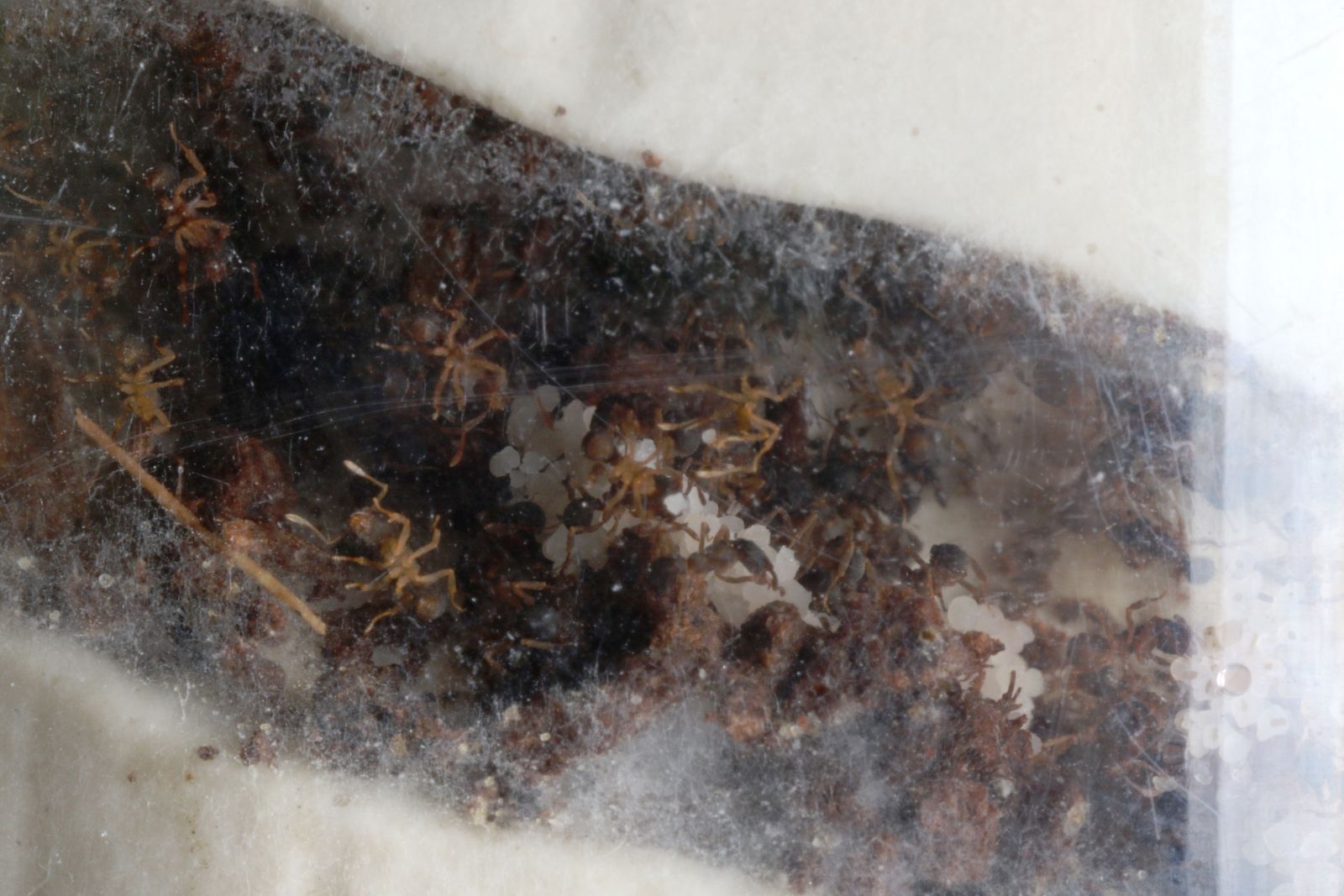
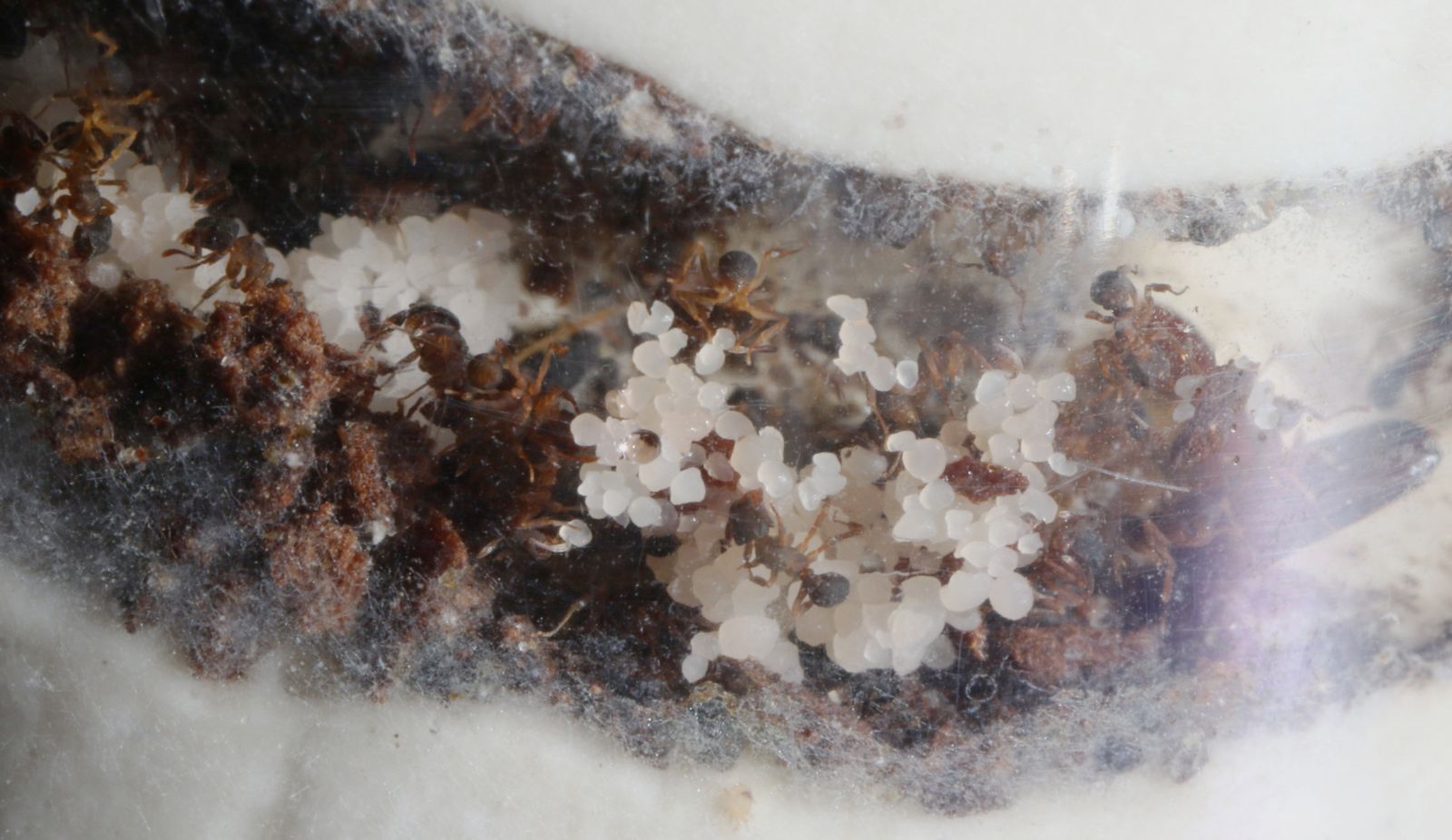
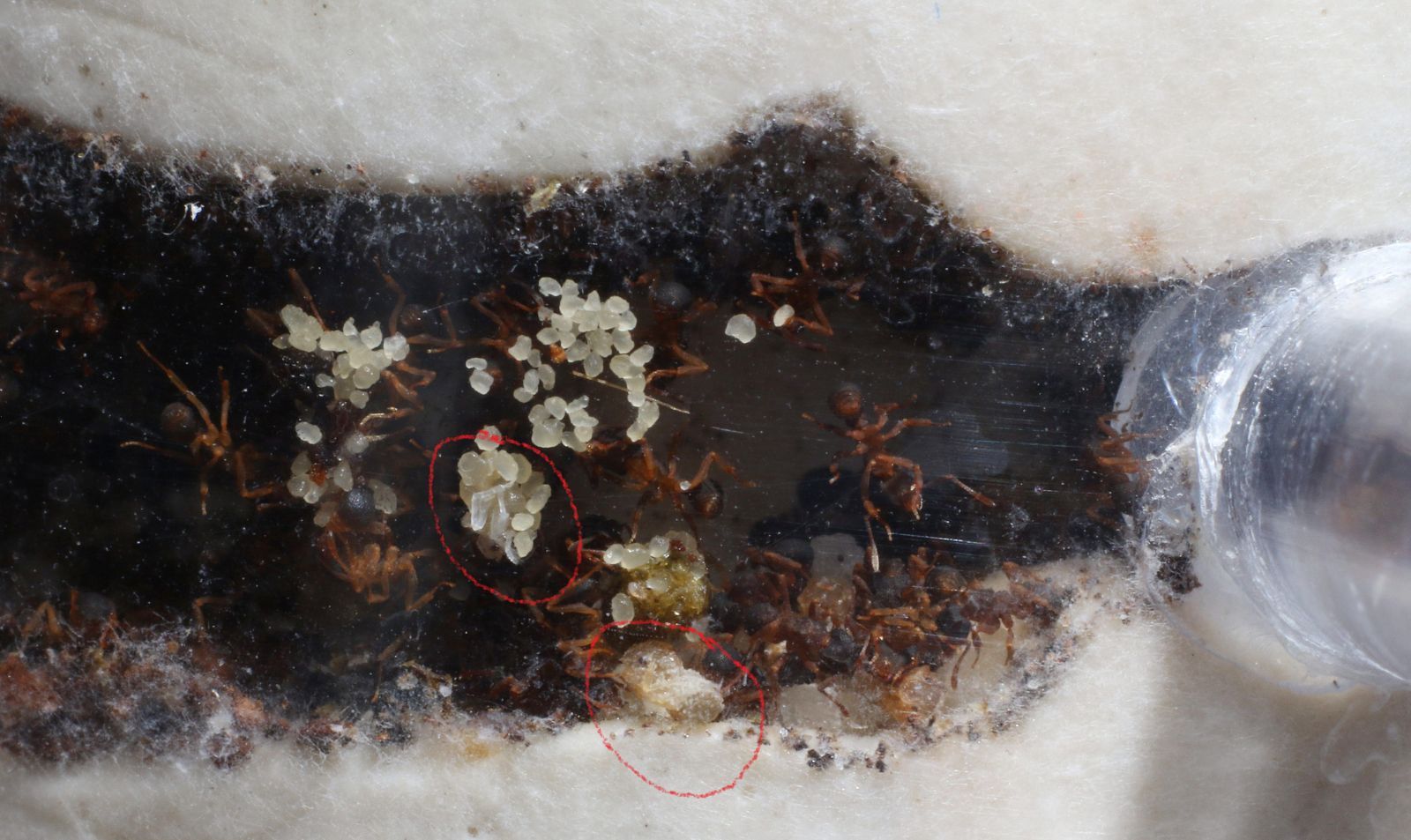
And lastly a picture of the queen sitting on her brood pile. It takes me a while to spot her sometimes because she is not as differentiated from the workers as in C. rimosus but she tromps around much more authoritatively than everyone else and I find that to be the easiest way to find her.
